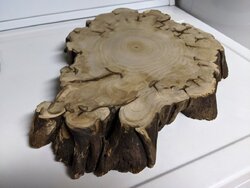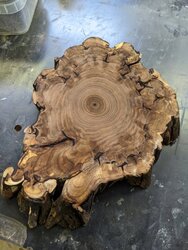I took this from the stump of a butternut I took down last spring. It was well dead before I dropped it.
I thought it gave a good perspective on the affliction that's wiping a lot of these trees out and really shows how the tree fought tooth and nail to stay alive. There was some serious growth to tryand heal over the cankers in the 8-9 nears since the tree first appeared to be stricken.
I thought it gave a good perspective on the affliction that's wiping a lot of these trees out and really shows how the tree fought tooth and nail to stay alive. There was some serious growth to tryand heal over the cankers in the 8-9 nears since the tree first appeared to be stricken.



